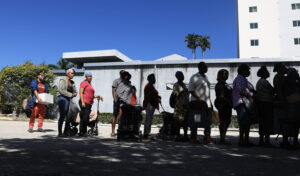The Dictatorship
Judges could rule on the fate of SNAP food aid as deadline nears for shutdown to end payments
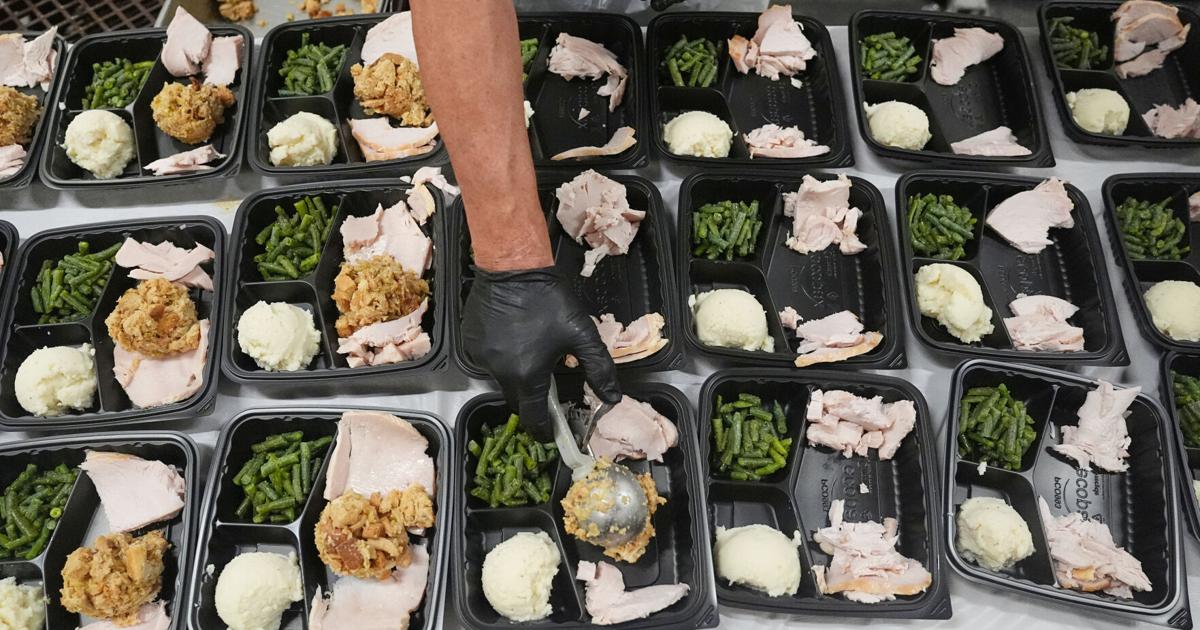
BOSTON (AP) — Two federal judges ruled nearly simultaneously on Friday that President Donald Trump’s administration must continue to pay for SNAP, the nation’s biggest food aid program, using emergency reserve funds during the government shutdown.
The judges in Massachusetts and Rhode Island gave the administration leeway on whether to fund the program partially or in full for November. That also brings uncertainty about how things will unfold and will delay payments for many beneficiaries whose cards would normally be recharged early in the month.
The U.S. Department of Agriculture planned to freeze payments to the Supplemental Nutrition Assistance Program starting Nov. 1 because it said it could no longer keep funding it due to the shutdown. The program serves about 1 in 8 Americans and is a major piece of the nation’s social safety net. It costs about $8 billion per month nationally.
U.S. Sen. Amy Klobuchar, a Minnesota Democrat and the ranking member of the Senate Agriculture committee that oversees the food aid program, said Friday’s rulings from judges nominated to the bench by former President Barack Obama confirm what Democrats have been saying: “The administration is choosing not to feed Americans in need, despite knowing that it is legally required to do so.”
Trump posted on social media Friday blasting congressional Democrats for the shutdown and suggesting the government would comply with the rulings but also that it needed more clarity first: “If we are given the appropriate legal direction by the Court, it will BE MY HONOR to provide the funding.”
Judges agree at least one fund must go toward SNAP
Democratic state attorneys general or governors from 25 states and the District of Columbia challenged the plan to pause the program, contending that the administration has a legal obligation to keep it running in their jurisdictions.
The administration said it wasn’t allowed to use a contingency fund of about $5 billion for the program, which reversed a USDA plan from before the shutdown that said money would be tapped to keep SNAP running. The Democratic officials said not only could that money be used, but that it must be. They also said a separate fund with around $23 billion is available for the cause.
In Providence, Rhode Island, U.S. District Judge John J. McConnell ruled from the bench in a case filed by cities and nonprofits that the program must be funded using at least the contingency funds. He asked for an update on progress by Monday.
Along with ordering the federal government to use emergency reserves to backfill SNAP benefits, McConnell ruled that all previous work requirement waivers must continue to be honored. The USDA during the shutdown has terminated existing waivers that exempted work requirements for older adults, veterans and others.
There were similar elements in the Boston case, where U.S. District Judge Indira Talwani ruled in a written opinion that the USDA has to pay for SNAP, calling the suspension “unlawful.” She ordered the federal government to advise the court by Monday as to whether they will use the emergency reserve funds to provide reduced SNAP benefits for November or fully fund the program “using both contingency funds and additional available funds.
“Defendants’ suspension of SNAP payments was based on the erroneous conclusion that the Contingency Funds could not be used to ensure continuation of SNAP payments,” she wrote. “This court has now clarified that Defendants are required to use those Contingency Funds as necessary for the SNAP program.”
For many, benefits will still be delayed after the ruling
No matter how the rulings came down, the benefits for millions of people will be delayed in November because the process of loading cards can take a week or more in many states.
The administration did not immediately say whether it would appeal the rulings.
States, food banks and SNAP recipients have been bracing for an abrupt shift in how low-income people can get groceries. Advocates and beneficiaries say halting the food aid would force people to choose between buying groceries and paying other bills.
Most states have announced more or expedited funding for food banks or novel ways to load at least some benefits onto the SNAP debit cards.
Across the U.S., advocates who had been sounding the alarm for weeks about the pending SNAP benefits cut off let out a small sigh of relief as the rulings came down Friday, while acknowledging the win is temporary and possibly not complete.
“Thousands of nonprofit food banks, pantries and other organizations across the country can avoid the impossible burden that would have resulted if SNAP benefits had been halted,” said Diane Yentel, president and CEO of the National Council of Nonprofits, one of the plaintiffs in the Rhode Island case.
The possibility of reduced benefits also means uncertainty
Cynthia Kirkhart, CEO of Facing Hunger Food Bank in Huntington, West Virginia, said her organization and the pantries it serves in Kentucky, Ohio and West Virginia will keep their extra hours this weekend, knowing that the people whose benefits usually arrive at the start of the month won’t see them.
“What we know, unless the administration is magical, is nothing is going to happen tomorrow,” she said.
Kristle Johnson, a full-time nursing student and mother of three in Florida, is concerned about the possibility of reduced benefits.
Despite buying meat in bulk, careful meal planning and not buying junk food, she said, her $994 a month benefit doesn’t buy a full month’s groceries.
“Now I have to deal with someone who wants to get rid of everything I have to keep my family afloat until I can better myself,” Johnson said of Trump.
The ruling doesn’t resolve partisan tussles
At a Washington news conference earlier Friday, Agriculture Secretary Brooke Rollins, whose department runs SNAP, said the contingency funds in question would not cover the cost of the program for long. Speaking at a press conference with House Speaker Mike Johnson at the Capitol, she blamed Democrats for conducting a “disgusting dereliction of duty” by refusing to end their Senate filibuster as they hold out for an extension of health care funds.
A push this week to continue SNAP funding during the shutdown failed in Congress.
To qualify for SNAP in 2025, a family of four’s net income after certain expenses can’t exceed the federal poverty line, which is about $31,000 per year. Last year, SNAP provided assistance to 41 million people, nearly two-thirds of whom were families with children.
“The court’s ruling protects millions of families, seniors, and veterans from being used as leverage in a political fight and upholds the principle that no one in America should go hungry,” Skye Perryman, president and CEO of Democracy Forward, said of the Rhode Island decision.
___
Mulvihill reported from Haddonfield, New Jersey; and Kruesi from Providence, Rhode Island. Associated Press reporter Lisa Mascaro in Washington, D.C., contributed.
The Dictatorship
Our national debt and spending are up despite DOGE and other federal cuts. Here’s why.
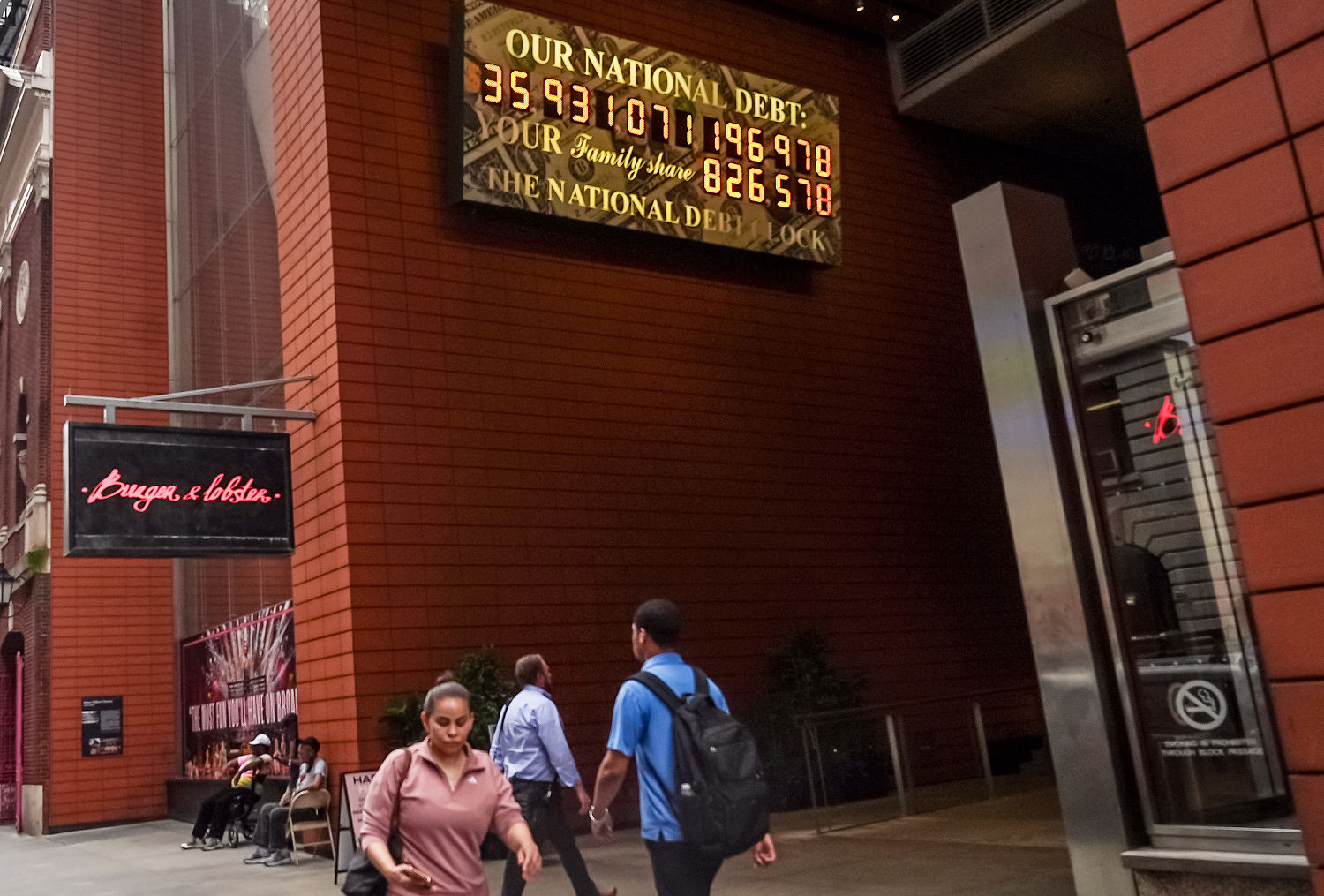
There are two fundamental fiscal truths: America has a debt problem, and dealing with the debt will not be easy.
So far, our leaders are not coming to terms with the facts.
The numbers speak for themselves. In the fiscal year that just ended on Sept. 30 — the last date for which the federal government was funded — the deficit was largely unchanged from its fiscal 2024 level: $1.8 trillion. In other words, despite the Trump administration’s focus on cost cutting in the federal government and all the additional revenue coming from tariffsthe deficit is still as large as it was a year ago.
All told, federal spending from January 2025 to September 2025 is up about 2% from the same period in 2024.
All told, federal spending from January 2025 to September 2025 is up about 2% from the same period in 2024. You might wonder how that is possible, given that the government (when it was funded) has operated under the same discretionary spending levels as last year, as well as high-profile Trump administration activities such as the Department of Government Efficiency effort, downsizing of the federal workforce, the abolition of the U.S. Agency for International Development and the forthcoming closure of the Department of Education. Two words: mandatory spending.
The largest mandatory spending programs are Social Security and Medicare. Others include things such as Medicaid and the Affordable Care Act subsidies, safety-net programs such as SNAP and Supplemental Security Income, and various other programs such as student loans and some veterans’ benefits. These programs don’t require regular review by Congress, and they grow automatically for a variety of reasons, such as higher enrollment or higher costs.
A closer look at the numbers is revealing. Since January, the federal government has spent $5.2 trillion — about $100 billion more than it spent from January through September of 2024. Spending on Social Security — the largest federal program — grew by $96 billion; Medicare spending grew by $58 billion; and spending on other federal health programs, including Medicaid, grew by a combined $46 billion. Discretionary spending, which Congress decides on annually through the appropriations process, grew as well, largely due to increases in defense ($19 billion) and the discretionary portion of veterans’ benefits ($27 billion). And do not forget about interest on the national debt, which grew by $63 billion.
Offsetting about two-thirds of the total increase in spending was a combination of one-time savings for student loan programs enacted by the One Big Beautiful Bill reconciliation law and decreases in spending on international affairs ($22 billion), among other relatively small changes.
For all the recent talk of policymakers’ interest in curtailing spending, the glaring issue when it comes to actual action has been the two behemoths of the budget: Social Security and Medicare.
To get borrowing under control, we’ll need to cut spending, increase revenue or some combination of the two (ideally along with economic growth). The reconciliation law put in place significant spending cuts, largely achieved through smart savings such as cracking down on abusive financing practices that states use to exploit Medicaid’s formula for matching funds. But those cuts were more than drowned out by massive tax cuts — only a small portion of which were financed — as well as increases in spending for defense and border security. That mismatch will increase interest costs as well. As a result, that law will cut total spending through 2034 only by about $400 billion — compared to $86 trillion in spending during the same period.
For all the recent talk of policymakers’ interest in curtailing spending, the glaring issue when it comes to actual action has been the two behemoths of the budget: Social Security and Medicare. Without touching either of these programs, there really isn’t much space to make significant improvements in our country’s fiscal situation. Worse, both programs have trust funds that are on a path toward insolvency. Social Security’s retirement trust fund and Medicare’s Hospital Insurance trust fund will run out of reserves in just seven years. At that point, the programs will be slashed — Social Security benefits by 24% and Medicare by 12% — as they are unable to cover what has been promised. Not making spending changes cements these across-the-board cuts.
Americans should be concerned with the dismal state of our fiscal situation. It will take tough choices and trade-offs to slow the growth in spending or otherwise raise revenue to the point that our national borrowing is sustainable. Ideally, our leaders would do that before it is too late.
Maya MacGuineas
Maya MacGuineas is president of the nonpartisan Committee for a Responsible Federal Budget.
The Dictatorship
I’m the woman acquitted for assaulting an FBI agent. Here’s my story.

I’m a law-abiding citizen who never thought I’d be of such interest that the U.S. government would use my tax dollars and yours to try to send me to prisonbut there I was in Washington, D.C., at the end of July being manhandled by an Immigration and Customs Enforcement agent trying to remove my phone from my hand.
And there I was in court last month being tried — and quickly acquitted by a jury of my peers — on the false charge that I’d “forcefully pushed” an FBI agent’s hand against a cement wall and “caused lacerations.” All I’d done that night in July was stand outside the D.C. jail so the families of the men being detained for possible deportation would know what had happened to them. I wanted those men and their families to be treated fairly in this unjust time we are living in.
Observing and recording what my government does is my business.
But as he threw me against a wall and handcuffed me, the agent who arrested me said, “If you just minded your own f—ing business, this wouldn’t happen.”
If I had minded my own business. Observing and recording what my government does — which is what I was doing when I got arrested — is my business.
Here’s what sticks out about my experience: being put in the back of an unmarked SUV and with handcuffs that were put on so tight, I have permanently lost feeling in my thumb; not being read my rights or being told what I was being charged with beyond not minding my business.
Shortly before my arrest, I had just gotten a new job working at an animal hospital and moved into a new apartment in a part of the city I’ve always wanted to live in. Things were going great. But would I even have a job to go back to now?
I’m glad I did. My supervisor actually thanked me for doing what I did, for standing up for a group of people being targeted in this country. And I cried. I believe that filming what federal agents were doing that day counted as basic human decency.

After days of not knowing why I was being held, my public defender, Tezira Abe, told me the government wanted to charge me with felony assault of a federal agent, a crime that carried up to eight years in prison. I was dumbfounded.
Three grand juries refused to indict me after the government presented its case against me. That should have been the end of it. But then U.S. Attorney Jeanine Pirro’s office decided to charge me with a misdemeanorwhich doesn’t require a grand jury. I don’t know which was greater, my fear or my disbelief. I was still facing a year in the county jail.
But I’m grateful that on Oct. 16, jurors saw through what our government was trying to do to me and quickly acquitted me.
As I said in a statement that day, “Knowing that I can stand in front of 12 of my fellow citizens and be found not guilty for standing up for basic human rights makes me feel like, despite the scary times we live in, we have hope for the future.”
My attorneys, Tezira Abe and Eugene Ohm, added, “We are pleased with the verdict but this is a trial that should never have happened. Twelve D.C. residents, numerous taxpayer-paid court staff and public defenders had to spend time and resources on trying a case that has no place in a free democracy.” They also said: “The Department of Justice can continue to take these cases to trial to suppress dissent and to try and intimidate the people. But in the end, as long as we have a jury system, our citizens will continue to rebuke the DOJ through speedy acquittals.”
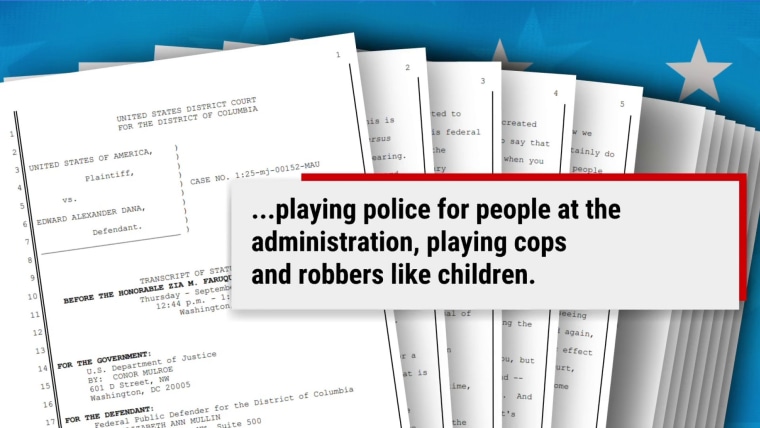
Though I was ultimately acquitted, I should never have been arrested and should never have been charged. The government’s unfair prosecution of me caused my life to be at a standstill for three months. I stopped unpacking my apartment and closed myself off from everything. Why would I keep on unpacking my apartment if I would have to empty it back out? How could I overcome the sadness I felt toward my country and enjoy my life? I kept my head down and worked. That was the only escape I had.
I was taught that you don’t have to make a scene or shout to be heard and that sometimes the quiet actions speak for themselves. This is not one of those times. We should all be screaming. We should all be taking action. This is our country. We are greater and stronger than this administration.
Sidney Reid
Sidney Reid is a Washington, D.C., resident who was booked with federal charges in July and acquitted in October.
The Dictatorship
The truth about who suffers from the White House’s manufactured SNAP crisis

More than 40 million Americans — that’s 1 in 8 people in this country — count on help from the federal Supplemental Nutrition Assistance Program to afford groceries each month. Many of them will wake up this morning to find their November benefits have not arrived. That’s because, for weeks, the Trump Administration has been saying it won’t provide those benefits, claiming that the government shutdown prevents funding them.
On Friday, in separate rulings, two federal judges ordered the Trump administration to use emergency funding to pay SNAP benefits. They confirmed the administration is legally required to tap contingency funds that Congress provided for precisely this scenario. They also confirmed that the administration can transfer additional funding to SNAP — as they did recently to shore up the WIC program — to supplement those contingency funds, which alone aren’t enough to fund full benefits.
About 16 million children get food assistance through SNAP each month.
Friday evening, the president wrote on TruthSocial“I have instructed our lawyers to ask the Court to clarify how we can legally fund SNAP as soon as possible.” But there’s no need for more deliberation or clarification. The administration is sitting on billions in contingency funds and needs to release them. The administration could have, and should have, taken steps weeks ago to be ready to use these funds. To further delay will rip away vital food assistance from millions of low-income families right before the holidays.
About 16 million children get food assistance through SNAP each month. So do eight million older adults and four million people with disabilities. SNAP also helps millions of low-income workers and their families. In fact, most SNAP participants who can work do work, with many in industries such as service or sales, where the pay is often low and the work hours inconsistent.
SNAP households have very low incomes. To qualify, a household’s gross monthly income generally must be at or below 130 percent of the poverty line, or roughly $2,850 a month (about $34,600 a year) for a three-person household. More than half of SNAP benefits go to households that are deeply poor, with incomes below 50 percent of the poverty line.

People of all racial and ethnic backgrounds participate in SNAP. Roughly 42% of the heads of SNAP households are white, 25 percent are Black, 23 percent are Latino, and 4 percent are Asian. SNAP participants come from all kinds of communities, rural, suburban, and urban.
SNAP benefits are modest: just $6.20 per person per day. But even that limited aid protects families from hunger and hardship by helping them afford enough food and freeing up room in their budgets for other basic needs such as rent, utilities and medical care. Participating in SNAP reduces the share of households who are food insecure (meaning they don’t have access to adequate food) by up to 30%. It’s even more effective for children and for families with “very low food insecurity,” where one or more household members have to eat less due to lack of money.
Not only are contingency funds available, but the administration is legally required to use them.
In short, SNAP helps millions of families lift themselves out of poverty. Its positive effects aren’t limited to its recipients either. The program also stabilizes the economy during downturns and supports businesses where SNAP dollars are spent, as well as their suppliers. But all those benefits hinge on continued federal funding.
The administration’s decision to starve SNAP during the shutdown is consistent with the president’s — and congressional Republicans’ — treatment of the program in their “One Big Beautiful Bill” enacted in July. It imposed the biggest cuts in SNAP’s 50-year historyincluding expanding punitive policies that take SNAP away from people who don’t meet rigid, paperwork-laden work requirements to apply to parents of many school-age children, adults as old as 64 and veterans.

My Center on Budget and Policy Priorities colleagues and I estimate that roughly four million people, including one million children, will see the food assistance they need to afford groceries terminated or reduced substantially under the new law. The law’s SNAP cuts, plus its massive cuts in health care coverageare designed to partly offset the cost of enormous tax cuts favoring wealthy households. Those making more than $1 million a year, for example, will get an average tax break of $100,000 apiece, while millions more struggle to put food on the table.
The administration created this crisis and can just as easily solve it. First, USDA should release SNAP contingency funds as the law allows. USDA should also augment those funds by using its discretion to transfer other funding to SNAP, as it did for WIC. The millions of people who count on SNAP deserve no less. And the American people deserve a government that will never inflict unnecessary hardship on vulnerable people.
Ty Jones Cox
Ty Jones Cox is the vice president for food assistance at the Center on Budget and Policy Priorities.
-
Uncategorized12 months ago
Bob Good to step down as Freedom Caucus chair this week
-

 Politics8 months ago
Politics8 months agoFormer ‘Squad’ members launching ‘Bowman and Bush’ YouTube show
-

 The Josh Fourrier Show12 months ago
The Josh Fourrier Show12 months agoDOOMSDAY: Trump won, now what?
-

 The Dictatorship9 months ago
The Dictatorship9 months agoPete Hegseth’s tenure at the Pentagon goes from bad to worse
-
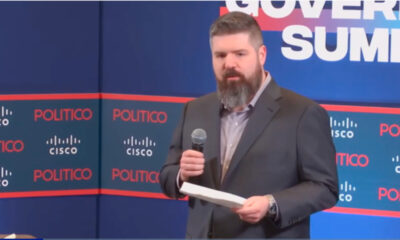
 Politics8 months ago
Politics8 months agoBlue Light News’s Editorial Director Ryan Hutchins speaks at Blue Light News’s 2025 Governors Summit
-

 The Dictatorship9 months ago
The Dictatorship9 months agoLuigi Mangione acknowledges public support in first official statement since arrest
-

 Politics8 months ago
Politics8 months agoFormer Kentucky AG Daniel Cameron launches Senate bid
-

 Politics12 months ago
Politics12 months agoWhat 7 political experts will be watching at Tuesday’s debate






